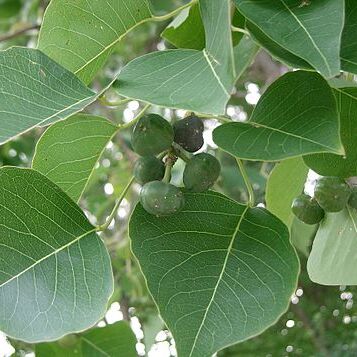Trees, monoecious; hairs absent; latex white. Leaves deciduous, alternate, simple; stipules present, persistent; petiole present, glands present at apex; blade unlobed, margins entire, laminar glands abaxial, submarginal, occasionally absent on some leaves; venation pinnate. Inflorescences bisexual (pistillate flowers proximal, staminate distal) or staminate, terminal and subterminal (in axils of branch-tip leaves), racemelike thyrses; glands subtending each bract 2. Pedicels present. Staminate flowers: sepals 3, apparently imbricate, connate most of length; petals 0; nectary absent; stamens 2–3, distinct; pistillode absent. Pistillate flowers: sepals 3, distinct or connate basally; petals 0; nectary absent; pistil 3-carpellate; styles 3, connate 1/2–2/3 length, unbranched. Fruits capsules. Seeds ovoid with ventral face distinctly flattened or angled; outer seed coat fleshy; caruncle absent. x = 11.

